
- Why-Roofing-Materials-Matter-in-Forested-Areas
- Top-Roofing-Materials-for-High-Moisture-Areas
- Considerations-When-Choosing-Roofing-for-Wet-Climates
- How-to-Maintain-Your-Roof-in-High-Moisture-Environments
- Where-to-Buy-Roofing-Materials-for-Moisture-Heavy-Areas
1. Why Roofing Materials Matter in Forested Areas
Living in a forested area can be a peaceful and beautiful experience, but it comes with unique challenges when it comes to home maintenance. One of the most important aspects of protecting your home is ensuring your roof can withstand the elements, particularly in areas with high moisture, frequent rain, and high humidity levels. The right roofing materials can help prevent water damage, mold, and decay, ensuring your home remains dry, safe, and secure.
1.1 Forested Areas and Moisture Challenges
In forested regions, the combination of high moisture, trees, and frequent rainfall creates a tough environment for roofing materials. High moisture levels can lead to mold, algae growth, and roof decay. Moreover, falling leaves and branches can damage your roof, so choosing a durable roofing material is crucial to prevent long-term problems.
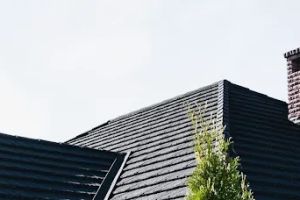
AAA Roofing Repair & Installation
RandolphMorris CountyNew Jersey
1360 Sussex Turnpike, Randolph, NJ 07869, USA
1.2 Importance of Moisture-Resistant Roofing
Choosing moisture-resistant roofing materials is essential in forested areas. The right materials will protect your home from water infiltration and reduce the need for frequent repairs. Moisture-resistant materials also help prevent mold growth and ensure that your roof performs well in high-humidity environments.
2. Top Roofing Materials for High Moisture Areas
When living in a forested area with high moisture levels, it’s important to choose the right roofing materials that can stand up to the challenges of the environment. Below are some of the best options to consider:
2.1 Metal Roofing
Metal roofing is an excellent choice for homes in high-moisture areas. It's highly durable, resists water, and is less likely to develop mold or mildew. Metal roofs are also fire-resistant, making them a safe option in forested regions prone to wildfires. Additionally, metal roofs are low-maintenance, which is perfect for homeowners who want long-lasting protection with minimal upkeep.
2.2 Asphalt Shingles
Asphalt shingles are a popular and affordable roofing option that works well in high-moisture areas. Modern asphalt shingles are designed to be water-resistant and can handle the humidity levels found in forested regions. Look for high-quality, impact-resistant shingles with a longer lifespan to ensure your roof stands up to the elements.
2.3 Slate Roofing
Slate roofing is another durable option that performs well in forested areas with high moisture. Slate is naturally waterproof and resists mold and mildew, making it ideal for humid climates. It’s also fire-resistant and can last for decades. However, slate roofing is expensive and heavy, so it's important to ensure your home’s structure can support the weight.
2.4 Clay or Concrete Tiles
Clay and concrete tiles are another great choice for areas with high moisture. These materials are naturally resistant to water and can withstand a significant amount of wear and tear. While heavier than asphalt shingles, they provide excellent durability and are perfect for areas prone to high rainfall. Additionally, they offer a distinctive aesthetic appeal to homes in forested areas.
2.5 Cedar Shake Roofing
Cedar shake roofing is a traditional option that blends well with the natural surroundings of a forested home. Cedar shakes are resistant to rot, and their natural oils help protect against moisture and insects. While they require more maintenance than other roofing materials, their rustic look makes them a popular choice for homes in wooded areas. It's important to treat cedar roofs regularly to ensure they stay protected against moisture damage.
3. Considerations When Choosing Roofing for Wet Climates
When selecting roofing materials for a home in a forested area with high moisture, there are several factors to consider. Here are the most important points to keep in mind:
3.1 Durability and Longevity
The roofing material you choose must be durable enough to withstand heavy rain, snow, and moisture over time. Materials like metal, slate, and concrete are known for their long-lasting performance, making them ideal for high-moisture environments.
3.2 Mold and Mildew Resistance
Moisture breeds mold and mildew, so it’s important to select materials that are resistant to these issues. Metal, slate, and treated cedar shakes offer the best protection against mold and mildew growth. Additionally, materials that allow for proper ventilation will help prevent the buildup of moisture under the roof.
3.3 Weight and Structure
Some roofing materials, like slate and clay tiles, are heavy and may require additional structural support. Before choosing these materials, make sure that your home’s foundation and frame can support the weight. Lighter materials like metal roofing or asphalt shingles are easier to install and require less structural reinforcement.
3.4 Aesthetic Considerations
The appearance of your roof can enhance the overall look of your home. Materials like cedar shakes, clay tiles, and slate can offer a natural, rustic aesthetic that blends well with a forested environment. Choose a material that complements your home’s architectural style and the surrounding landscape.
4. How to Maintain Your Roof in High Moisture Environments
Once you’ve selected the right roofing material for your home, proper maintenance is key to ensuring its longevity, especially in high-moisture environments. Here are some tips for maintaining your roof:
4.1 Regular Inspections
Perform regular roof inspections to check for any signs of water damage, mold, or mildew. Pay close attention to areas where debris may collect, as this can trap moisture and lead to long-term damage. If you live in a forested area with frequent storms, more frequent inspections may be necessary.
4.2 Clean Gutters and Downspouts
Clogged gutters can cause water to overflow onto your roof, leading to moisture damage. Keep your gutters and downspouts clear of debris to allow for proper water drainage. This will help prevent water from sitting on your roof and reduce the risk of leaks and mold growth.
4.3 Treat Cedar Shakes
If you have cedar shake roofing, it’s important to treat the wood with a protective sealant to prevent moisture damage. Regularly applying a waterproof treatment will help maintain the integrity of the shakes and prevent rot.
5. Where to Buy Roofing Materials for Moisture-Heavy Areas
When looking to purchase roofing materials for a high-moisture environment, it’s important to find a reputable supplier. Look for businesses that specialize in roofing materials designed for wet climates. You can also find roofing materials at local home improvement stores, but it’s worth researching specific brands that offer moisture-resistant options.
If you're looking for more tips on durable roofing options for forested or high-moisture areas, visit BeachCo Roofing Hub for trusted advice, high-quality materials, and professional roofing services tailored to your needs!

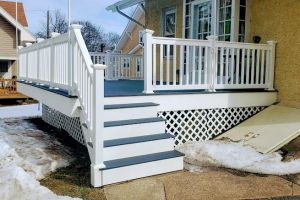

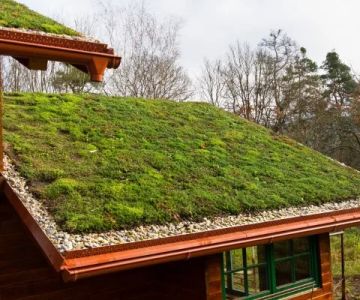
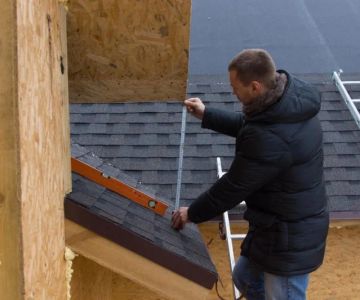
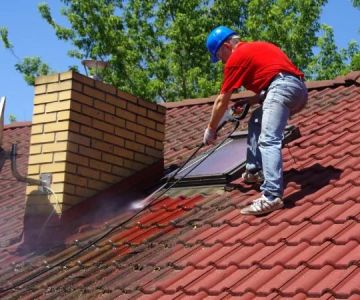
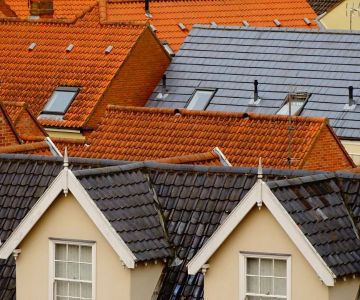
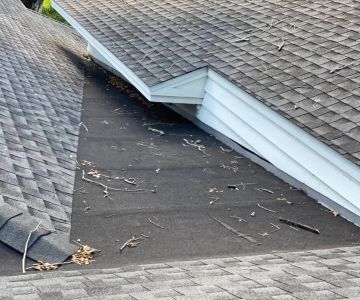
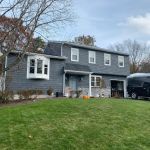 King Quality Roofing and Siding5.0 (187 reviews)
King Quality Roofing and Siding5.0 (187 reviews)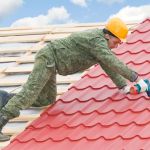 Dougherty Roofing3.0 (7 reviews)
Dougherty Roofing3.0 (7 reviews) Imagine Remodeling inc5.0 (116 reviews)
Imagine Remodeling inc5.0 (116 reviews)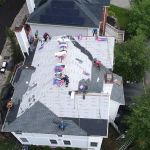 WEATHERGUARD ROOFING & RESTORATION0.0 (0 reviews)
WEATHERGUARD ROOFING & RESTORATION0.0 (0 reviews)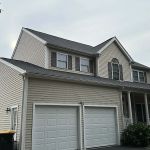 Eden's Roofing4.0 (11 reviews)
Eden's Roofing4.0 (11 reviews)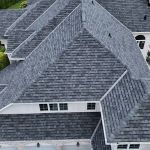 Braga Brothers Contracting5.0 (209 reviews)
Braga Brothers Contracting5.0 (209 reviews)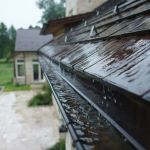 How to Prevent Roof Damage from Overflowing Gutters During Heavy Rain
How to Prevent Roof Damage from Overflowing Gutters During Heavy Rain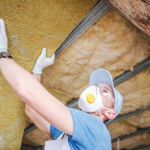 The Cost of a New Roof with Added Insulation for Energy Efficiency: What You Need to Know
The Cost of a New Roof with Added Insulation for Energy Efficiency: What You Need to Know How to Install Roof Ice Melt Systems to Prevent Ice Dams
How to Install Roof Ice Melt Systems to Prevent Ice Dams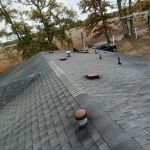 Best Roofing Materials for Mid-Century Modern Homes: Top Options for Style and Durability
Best Roofing Materials for Mid-Century Modern Homes: Top Options for Style and Durability How to Choose a Roof Color for a House with Dark Siding – BeachCo Roofing Hub
How to Choose a Roof Color for a House with Dark Siding – BeachCo Roofing Hub What is a Roofing Contingency in a Home Purchase Contract?
What is a Roofing Contingency in a Home Purchase Contract?